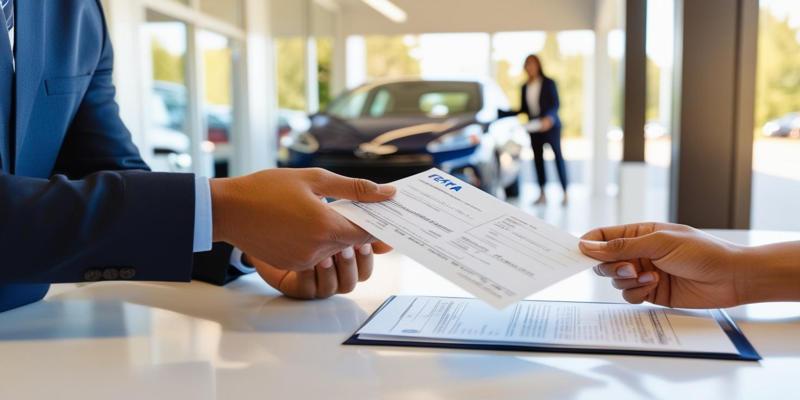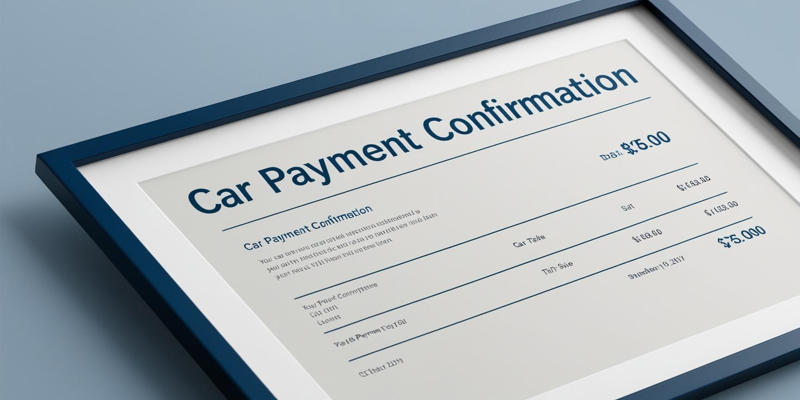Advertisement
Want to chop your car payments? You've probably read that making extra payments toward the principal is the key, but does it help? This step-by-step guide will walk you through exactly how paying extra money toward the principal of your car loan will lower your monthly car loan payment and the overall cost of the loan. You'll discover some pros and cons with this approach, how you can estimate savings, and other alternative methods to consider.
 When it comes to car loans, it is critical to understand how your monthly repayments are divided. Each repayment consists of two major parts: principal and interest. Let's examine what these terms mean and how they affect your loan.
When it comes to car loans, it is critical to understand how your monthly repayments are divided. Each repayment consists of two major parts: principal and interest. Let's examine what these terms mean and how they affect your loan.
Principal: The principal is the amount you borrowed to buy your vehicle. This is the actual cost of the car minus your down payment. Over time, as you make payments, the principal balance decreases.
Interest is the cost of borrowing money from the lender. Interest is a percentage of your outstanding principal balance. How much you pay in interest over the life of the loan is determined by the interest rate you qualify for.
When you make a monthly payment, this typically goes to both principal and interest. At the beginning of your loan term, much of your payment goes to pay down interest. As years pass and your principal balance has reduced, more from each payment is applied to the principal.
This is called amortization, which quite literally means you are paying your loan off deliberately. It is set up so that by the end of your loan term, you will have paid off the principal balance with tacked-on interest.
 You accelerate your debt whenever extra payments are made towards the car loan principal. Of course, this can have significant repercussions on your monthly car loans, but you need to understand how it works in the first place.
You accelerate your debt whenever extra payments are made towards the car loan principal. Of course, this can have significant repercussions on your monthly car loans, but you need to understand how it works in the first place.
Paying extra toward your principal does not immediately decrease your required monthly payment amount. You will still be obligated to make the same monthly payment amount soon. Those additional payments reduce the total interest you pay on your loan over its life, which may allow you to pay off your car sooner.
Some lenders may offer the option to recalculate your monthly payments based on the reduced principal balance. This process, often called "recasting" or "re-amortization," can result in lower monthly payments. However, it's not a standard practice for all auto loans, so it is vital to check with your lender regarding their policies.
Even if your monthly payment doesn't decrease immediately, paying extra towards the principal offers several advantages:
Paying extra towards your car loan principal has multiple advantages that can significantly impact your financial well-being. Let's investigate the considerable benefits of such an approach.
You reduce the amount owed by paying additional money against your car loan principal. Smaller principal translates to lower interest charges within your car loan term. Interest is levied on your outstanding balance; hence, with a smaller principal, the interest charged may save you an over-time accumulation of several hundred or thousands of dollars.
Another great advantage of paying extra on your principal is the possibility of shortening your loan term. You essentially speed up the process because you are chipping away at the principal faster than the original payment schedule. This could mean debt-free sooner than planned and freeing up your finances for other goals or investments.
Extra principal payments will also help you to build vehicle equity much faster. Equity refers to the difference between the value of your car and what you owe on the loan. The quicker the principal balance reduction, the more ownership interest you build in the vehicle. This better equity position may be advantageous if you decide to sell or trade in your car before the end of the loan term.
Paying an additional sum of money on the principal of your car loan will give you more financial flexibility over time. The faster you reduce your debt burden, the greater the buffer you build up in case of any other financial shock. Once the loan is paid off, you will have more monthly disposable income to devote to different financial goals or enhance your general economic well-being.
Understanding how principal payments affect your monthly car payment will go a long way in helping your financial planning. Let's see precisely how this process works and whether it can lighten your monthly burdens.
When you pay your car payment, the money is often divided between principal and interest. The principal is the amount you borrowedthe cost of the carminus any down payment you may have paid. The interest is what it costs to borrow money. As the principal shrinks, your interest drops, lowering your monthly payment.
How much extra you can pay on top of the regular payment, in addition to the principal of your car, is determined by the following:
You can run these variables through an online calculator or with spreadsheet formulas to calculate what those possible savings would look like. Suppose you had a $20,000 loan at 5% interest over 60 months, and you made an extra principal payment of $1,000-you could save several months off of your loan and hundreds in interest.
If you make such principal payments, here are some ways to maximize their impact:
When performed regularly, these activities significantly reduce total interest and time on a loan.
Overall, paying extra money toward the principal of your car loan is among the best ways to lower the overall interest cost and loan term. You will not immediately lower your monthly payment and refinance your auto loan to realize reduced monthly payments. Carefully consider making extra principal payments compared to other financial priorities: A knowledgeable approach to your car loan leads to significant, long-term savings and improved economic health.
Advertisement

By Sid Leonard/Mar 17, 2025

By Susan Kelly/Dec 28, 2024

By Noa Ensign/Nov 15, 2024

By Pamela Andrew/Mar 17, 2025

By Sean William/Mar 01, 2025

By Celia Shatzman/Nov 14, 2024

By Isabella Moss/Mar 18, 2025

By Martina Wlison/Nov 14, 2024

By Mason Garvey/Mar 16, 2025

By Celia Kreitner/Mar 01, 2025

By Madison Evans/Mar 18, 2025

By Maurice Oliver/Nov 14, 2024